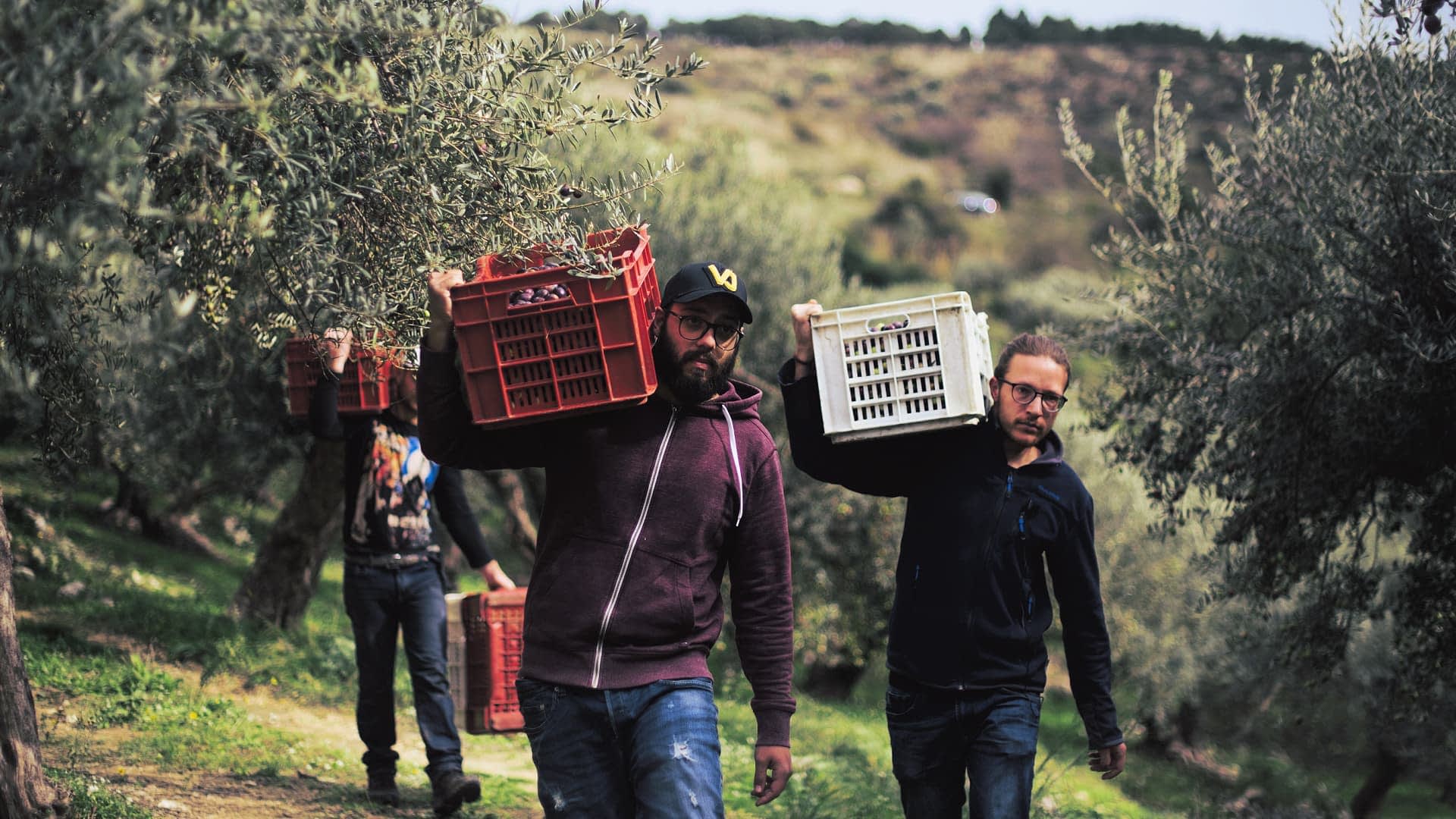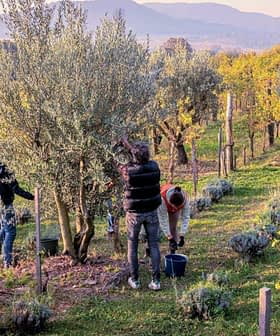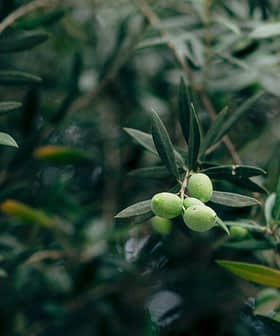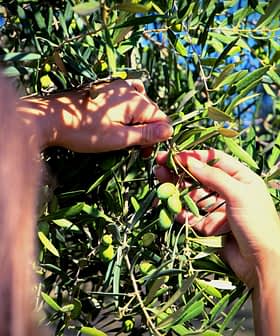Production in Italy Set for Sharp Decline, Down One-Third
Heat and drought in the south, combined with an ‘off-year,’ have resulted in a 30 percent decline in olive oil production in Italy.
 (Photo: Agrestis)
(Photo: Agrestis)  5.9K reads
5.9K readsThe changing climate is causing a significant drop in Italian olive oil production, with estimates predicting a decrease of up to 235,000 tons for the 2024/25 crop year. The decline is primarily attributed to prolonged drought, particularly affecting southern regions, leading to concerns that Italy may drop from second to fifth place among the world’s top olive oil producers.
“We’ve witnessed firsthand how climate change has increasingly impacted our daily work in the groves over the past few years,” said Pietro Nicotra, the co-owner of Agrestis, a Sicilian olive oil cooperative.
The persistent drought places tremendous stress on our olive trees, making it difficult for them to produce abundant fruit
Once again, the changing climate is severely affecting Italian olive oil production. Officials have confirmed that the 2024/25 crop year will suffer a significant drop in output.
According to a new report from the Italian Institute of Services for the Agricultural and Food Market (Ismea), total production is estimated to drop between 215,000 and 235,000 tons.
See Also:2024 Harvest UpdatesA slightly more cautious estimate from the Italian Association of the Edible Oil Industry (Assitol) predicted a yield of just 200,000 tons.
By comparison, Ismea reported that the 2023/24 crop year yielded more than 328,000 tons, 32 percent higher than the expected output for the upcoming season. Ismea noted that the average production over the last five seasons has been 307,000 tons.
Given these figures, Ismea warned that Italy risks dropping from second to fifth place among the world’s top olive oil producers.
Both Ismea and Assitol have attributed the production decline primarily to prolonged drought, particularly affecting southern regions.
Additionally, they noted that this year is primarily an ‘off-year’ in the natural alternate-bearing cycle of olive trees.
On and off years
Olive trees have a natural cycle of alternating high and low production years, known as “on-years” and “off-years,” respectively. During an on-year, the olive trees bear a greater quantity of fruit, resulting in increased olive oil production. Conversely, an “off-year” is characterized by a reduced yield of olives due to the stress from the previous “on year.” Olive oil producers often monitor these cycles to anticipate and plan for variations in production.
Yields are expected to vary significantly across the country, with northern and central regions less affected by unfavorable weather.
Ismea projects that Tuscany, Lazio and Umbria will see production rebounds of more than 70 percent compared to last season. In northern Italy, the rebound is expected to surpass 74 percent, despite an unidentified issue resulting in mysterious fruit drop in some groves.
Drought and heatwaves have had the most severe impact on major olive-producing regions, including Sicily, Calabria and Puglia, which account for most of Italy’s olive oil output.
Yields are expected to drop by at least 41 percent in these areas, along with those of Sardinia, Basilicata, Campania, Marche and Molise.

The Agrestis cooperative on Sicily expects an 80 percent production decline this year due to extreme weather. (Photo: Agrestis)
The award-winning Agrestis cooperative in Buccheri, Sicily, has endured several challenging years, demonstrating the resilience of high-quality producers.
Over the years, the cooperative has earned numerous accolades for the quality of its olive oil, including multiple Gold Awards at the NYIOOC World Olive Oil Competition since 2015.
“The persistent drought places tremendous stress on our olive trees, making it difficult for them to produce abundant fruit,” Nicotra said.
During the flowering period, the unusually warm spring and the extreme temperatures in May directly impacted the production of Agrestis’ olive trees.
“The fluctuation in temperatures between day and night, along with moisture settling on the plants, caused flower burn,” Nicotra said. “As a result, we experienced a devastating 80 percent loss of this year’s harvest.”
“Despite all these challenges, we remain committed,” she added. “Though the quantity is low, the olive oil we produce embodies our traditions and the native cultivars that have defined this land for centuries.”
Many producers in Puglia also reported a significant drop in production, although some areas experienced fewer losses.

Puglia is Italy’s most important olive oil producing region. (Photo: Voglia di Puglia)
“This year has been particularly challenging. We’re coming off a low production season, which affected the fruit set again this year, followed by severe drought. Even during winter, rainfall was scarce,” said Nicola Lamedica, olive specialist at Voglia di Puglia farm, located in the northernmost part of the southern region.
“Our strategy relies on drip irrigation and traditional olive-growing methods to combat the adverse climatic conditions we’re facing,” Lamedica added. “Through advanced pruning techniques and constant care of the plants, we’ve maintained high-quality fruit, which is now in excellent condition.”
In the central region of Umbria, producers said this season appears far more fruitful than the last.
“Last season was very challenging. We’ve just started, but this new one makes us extremely optimistic,” said Miriam Cinaglia and Sergio Rutili, owner and general manager of the award-winning Centumbrie.
“The raw material is excellent, and from our initial impressions, the organoleptic profile looks very promising,” they explained.
“From a quantitative perspective, we expect strong production in Umbria this season. Unlike last year, the drupes are richer in pulp, which raises hopes for further improvements in the quality of the final product,” Cinaglia and Rutili added.

Italy’s north and center are expected to have a good season after a low harvest in the 2023/24 crop year. (Photo: Centumbrie)
Further north, Casale 3 Danesi, near Lucca, Tuscany, manages a 450-tree olive orchard and expects a much more bountiful harvest this season than the last.
“This year, the weather has been perfect throughout the entire season,” said Henrik Jorgensen, the farm’s owner. “We usually face numerous weather challenges, such as early spring heat followed by sudden freezes, which cause flower loss. But this year, we’ve avoided those issues.”
Additionally, the organic producer has benefited from the absence of the olive fruit fly this year.
“A frost lasting at least three days in winter usually kills most flies below the soil’s surface. This year, we didn’t have any olive flies, which is a great relief,” Jorgensen said.
“When the olive fruit fly is present, we can only use traditional fly traps since we are organic producers,” he added.
According to Ismea, Italy has more than 619,000 olive-related companies and farms and 4,327 active mills.
Of Italy’s 1.16 million hectares of olive groves, 247,000 hectares, more than 21 percent, are cultivated organically.
Share this article










